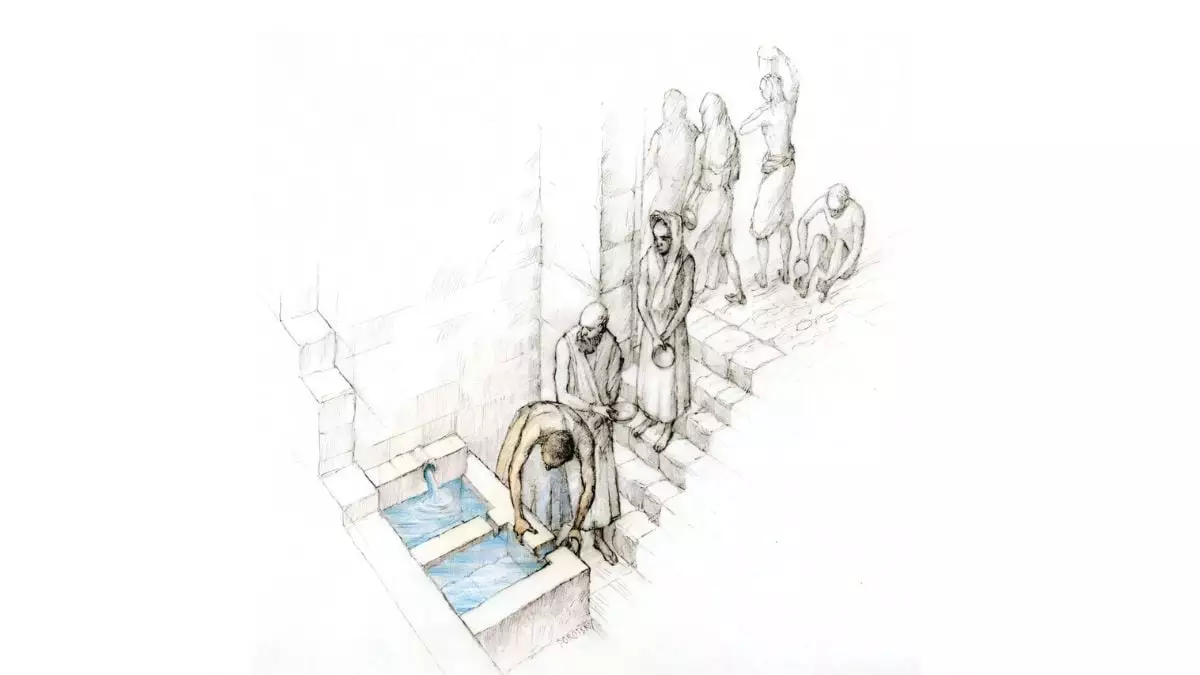In an age where the notion of spiritual practices often seems dated or obsolete, a remarkable archaeological discovery in northern Israel has reignited interest in ancient religious rites that may resonate with contemporary concepts of purification and community. The recent excavation of an ancient sanctuary reveals the significant role that ritual cleansing played within the religious framework of the kingdom of Israel. This isn’t just a minor find; it offers a compelling narrative around the integration of sacred practices and urban worship, showcasing a sophisticated understanding of spiritual connection that has remained underexplored.
Structures of Significance: The Bathhouse and Its Symbolism
The sanctuary’s unique bathhouse, composed of distinctly styled spaces for both dressing and purification, provides a window into the sacred life of ancient priests. The dual rooms, one adorned with yellow plaster and the other with blue, serve not merely as functional spaces but potential symbols of a deeper spiritual ideology. Each detail, from the colors to the layout, speaks to a culture that understood the importance of ritual in reinforcing social hierarchies and divine connections. While one might initially dismiss the size and coldness of the basin as impractical, it prompts a reevaluation of how community and individual rituals were potentially experienced. Unlike our modern perspectives on comfort, the cold spring water represents a purification challenge, perhaps meant to invigorate the spirit even in discomfort.
A Connection to the Divine Through Deity Worship
The mention of an obscure deity, inscribed on a limestone fragment discovered years earlier, indicates that the sanctuary was a site of complex religious interactions. The ambiguity surrounding the deity’s identity raises essential questions about regional cultural exchanges and the fluidity of religious practice. This sanctuary appears not only to have hosted local worshippers but also attracted visitors from far and wide, evidenced by imported ceramics and multilingual inscriptions. This hints at a broader spiritual environment that transcended local borders, suggesting that the ills of exclusivity in religious practice were being challenged even then.
Continuity Amidst Change: The Evolution of Rituals
Post-destruction, the continuity of the bathing ritual into the reestablished temple speaks to an innate human need for cleansing, both physically and spiritually. The newfound notion that pilgrims participated in their own ritual cleansing with clay vessels emphasizes that these practices were more than mere traditions; they were acts of communal identity and spiritual rebirth. Strikingly, the activities described echo biblical text, blurring the lines between individual action and collective spirituality.
Implications for Modern Understanding of Spirituality
As we delve into the depths of antiquity and unearth sites like the one at Tel Dan, it challenges us to redefine our understanding of spirituality. Perhaps the thirst for connection, purification, and a shared sense of community experienced by ancient worshippers can also find expression in our modern lives. We might find that, despite centuries of evolution, the fundamental desire to connect—with the divine, the community, and ourselves—remains an enduring human trait. Thus, archaeological sites such as this one not only preserve history but also resonate with our contemporary spiritual curiosities, inviting reflection and reinvention in the pursuit of meaning.

